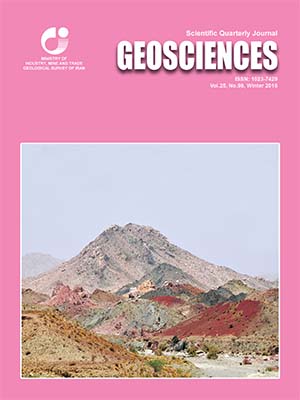Document Type : Original Research Paper
Authors
1 M.Sc., Department of Geology, Faculty of Sciences, University of Zanjan, Zanjan, Iran
2 Assistance professor, Department of Geology, Faculty of Sciences, University of Zanjan, Zanjan, Iran
Abstract
The study area,~12 km to the southwest of the city Behabad, is a part of the Posht-e-Badam Block in Central Iran. Igneous rocks in the area occur as intrusive, sub-volcanic and volcanic bodies and exhibit a wide range of composition from felsic to mafic. The intrusive and sub- volcanic rocks include the relatively large Homijan granitoid, Ferdows granitoid, gabbro- diorite stocks and Kuh-Siah sub- volcanic rhyolitic dome. The Homijan granitoid is composed of a shallow-level intrusion in the center to rhyolitic lavas and tuffs in the margins. The whole assemblage is covered by dolomites of the Rizu series, with no thermal metamorphism in the covering rocks. Homijan granitoid displays porphyritic, porphyroid and graphic textures composed of coarse plagioclase, alkali feldspar and quartz in a fine- grained quartz- feldspatic matrix; the marginal rhyolitic lavas have porphyritic and spherolitic textures with quartz and alkali feldspar phenocrysts. Rhyolitic tuffs have porphyroclastic texture. Ferdows granite has hetero-granular, graphic and perthitic texture composed of quartz, orthoclase and plagioclase. Kuh-Siah rhyolites have porphyric, felsophyry and felsitic textures with small quartz and alkali feldspar phenocrysts. Geochemical studies demonstrate that Homijan and Ferdows granitiods and the marginal rhyolites of the Homijan, as well as the Kuh-Siah rhyolitic dome have high- K calc- alkaline to shoshonitic nature and can be classified as S-type peraluminous granitoids with some tendency to I-type granitoids. Based on the spider diagrams, all rocks have similar trend which is indicative for their genetic relation. These diagrams indicate enriched LILEs (Rb, K, Th and Pb) along with negative anomalies of HFSEs (Nb and Ti). Chondrite normalized REE patterns demonstrate LREEs-enriched patterns with high ratios of LREE/HREE.The positive and negative anomalies of the mentioned elements in the studied rocks probably are related to lower partial melting degrees of a metasomatized mantle along with crustal contamination of the magma. Based on field investigation, petrographic studies and geochemistry, and using the granitoid discrimination tectonic setting diagrams, it seems that Homijan granitiods and related felsic rocks formed in a post- collisional setting within the Posht-e-Badam Block.
Keywords

